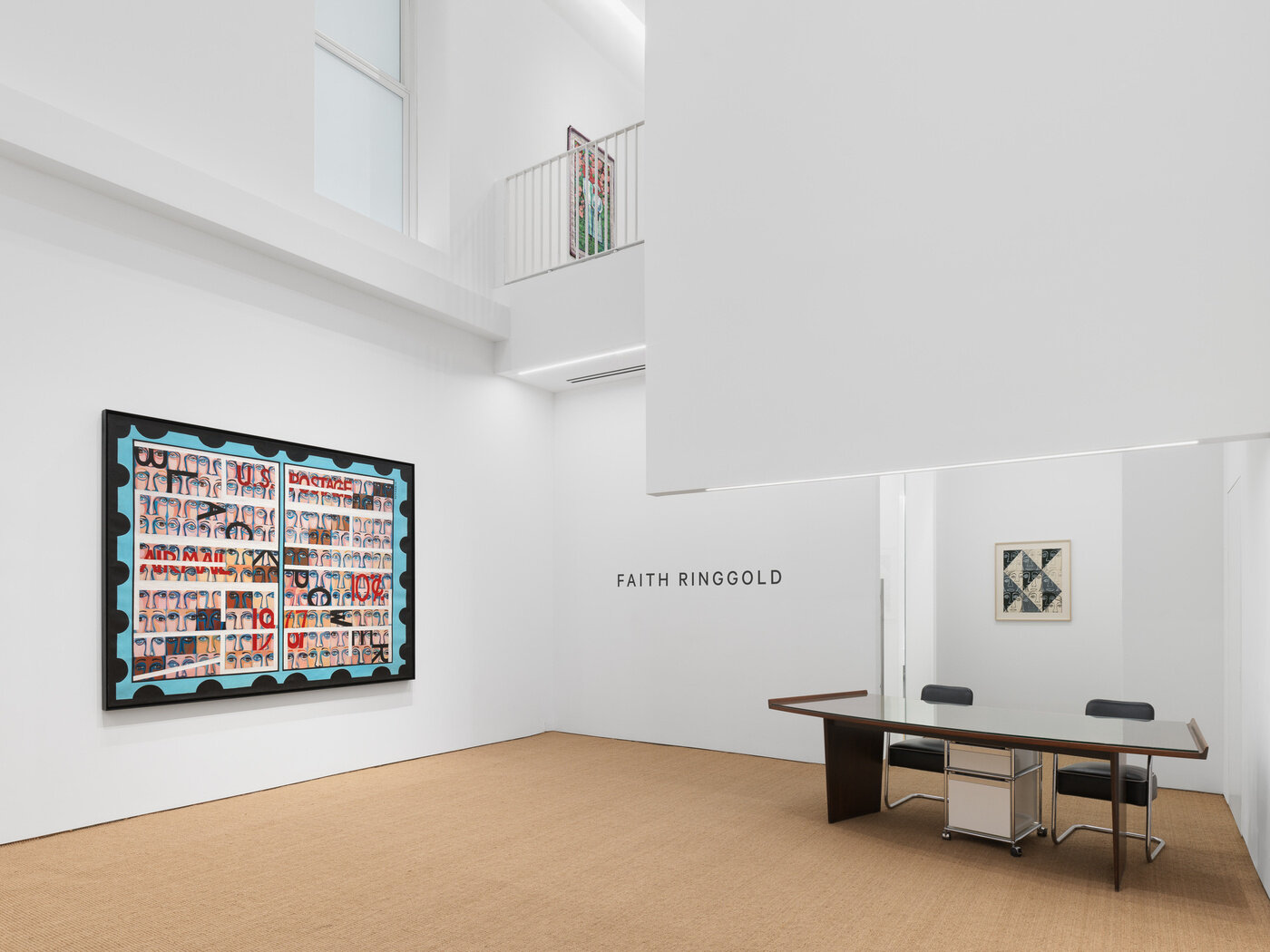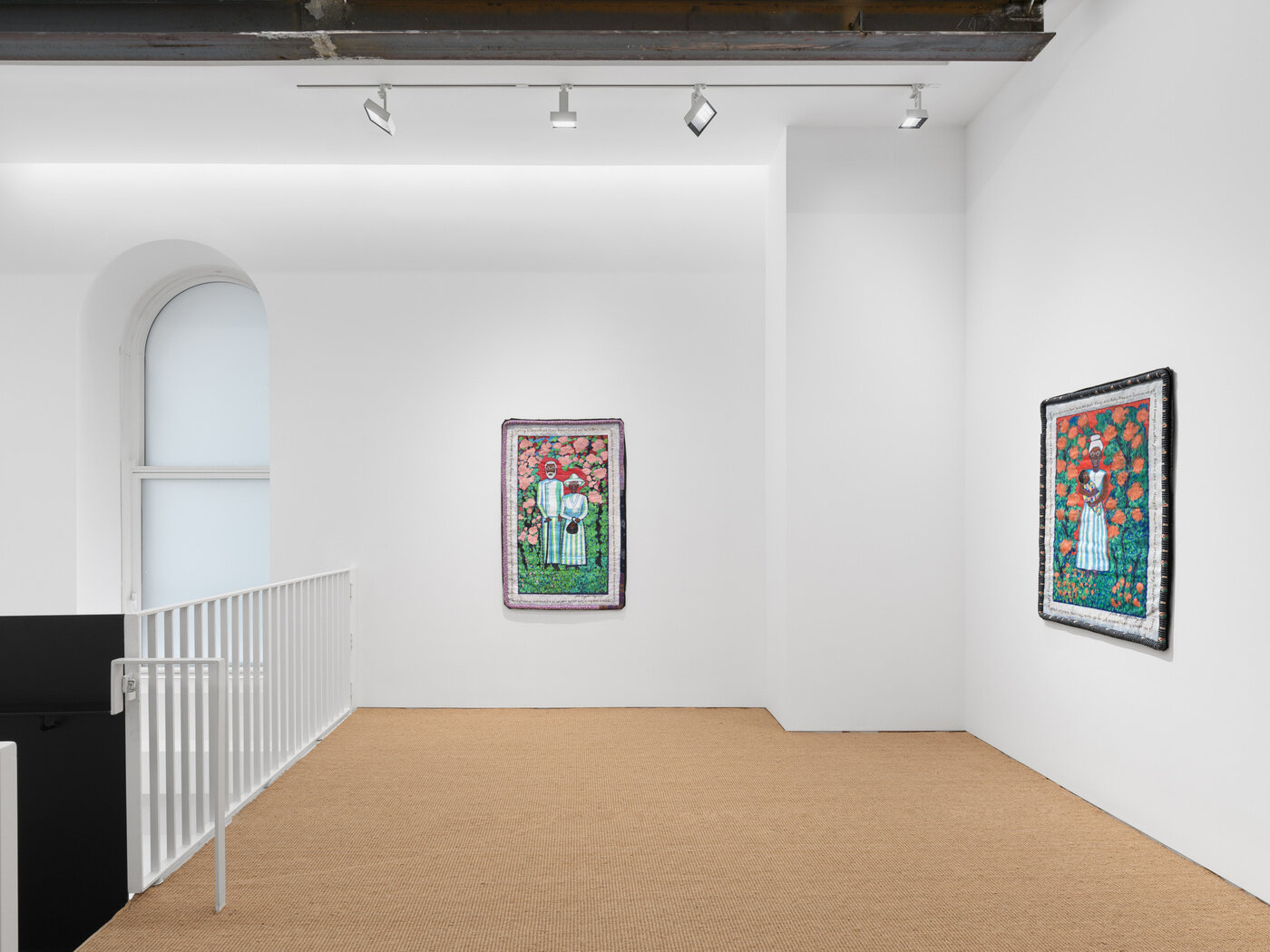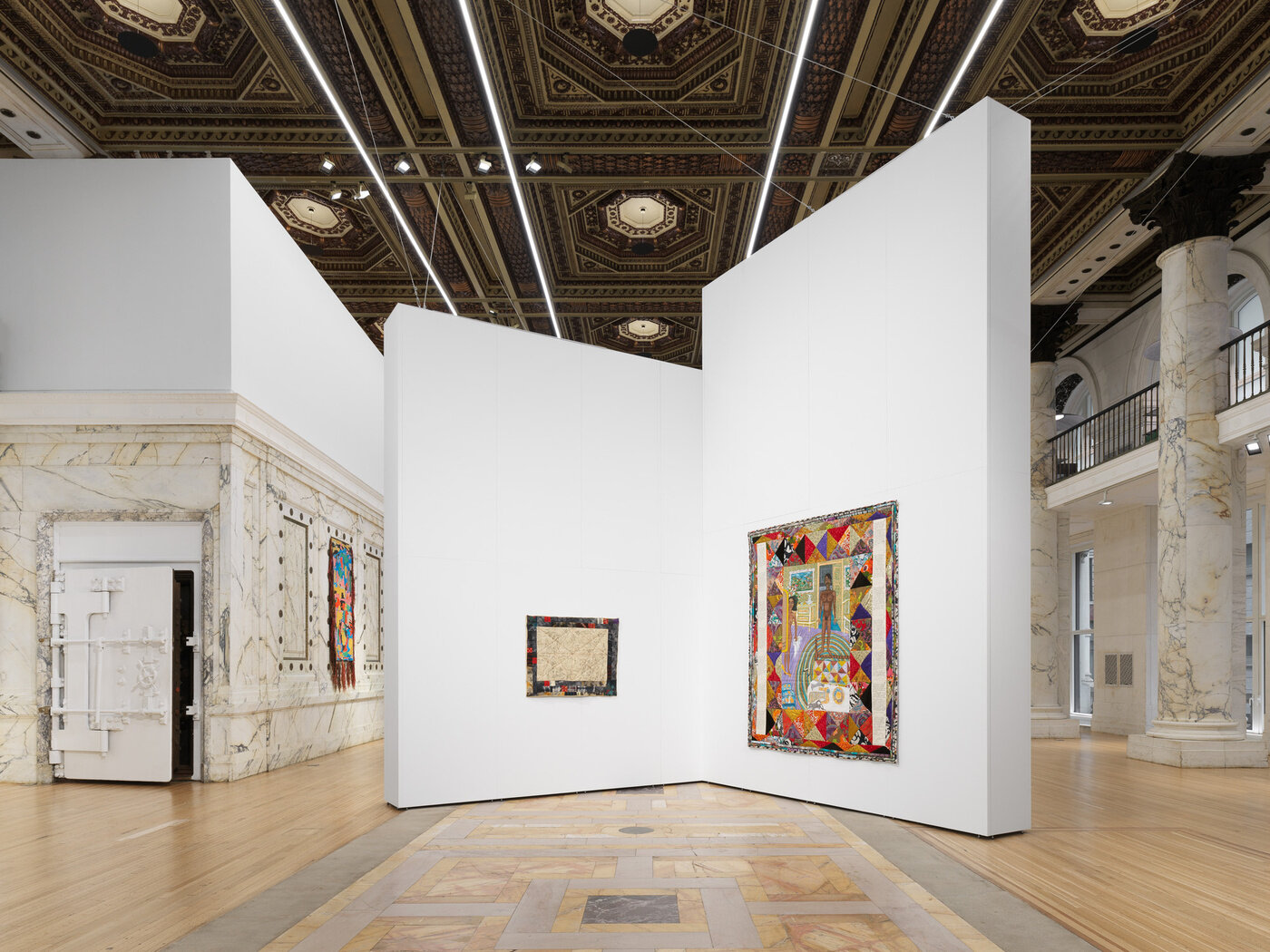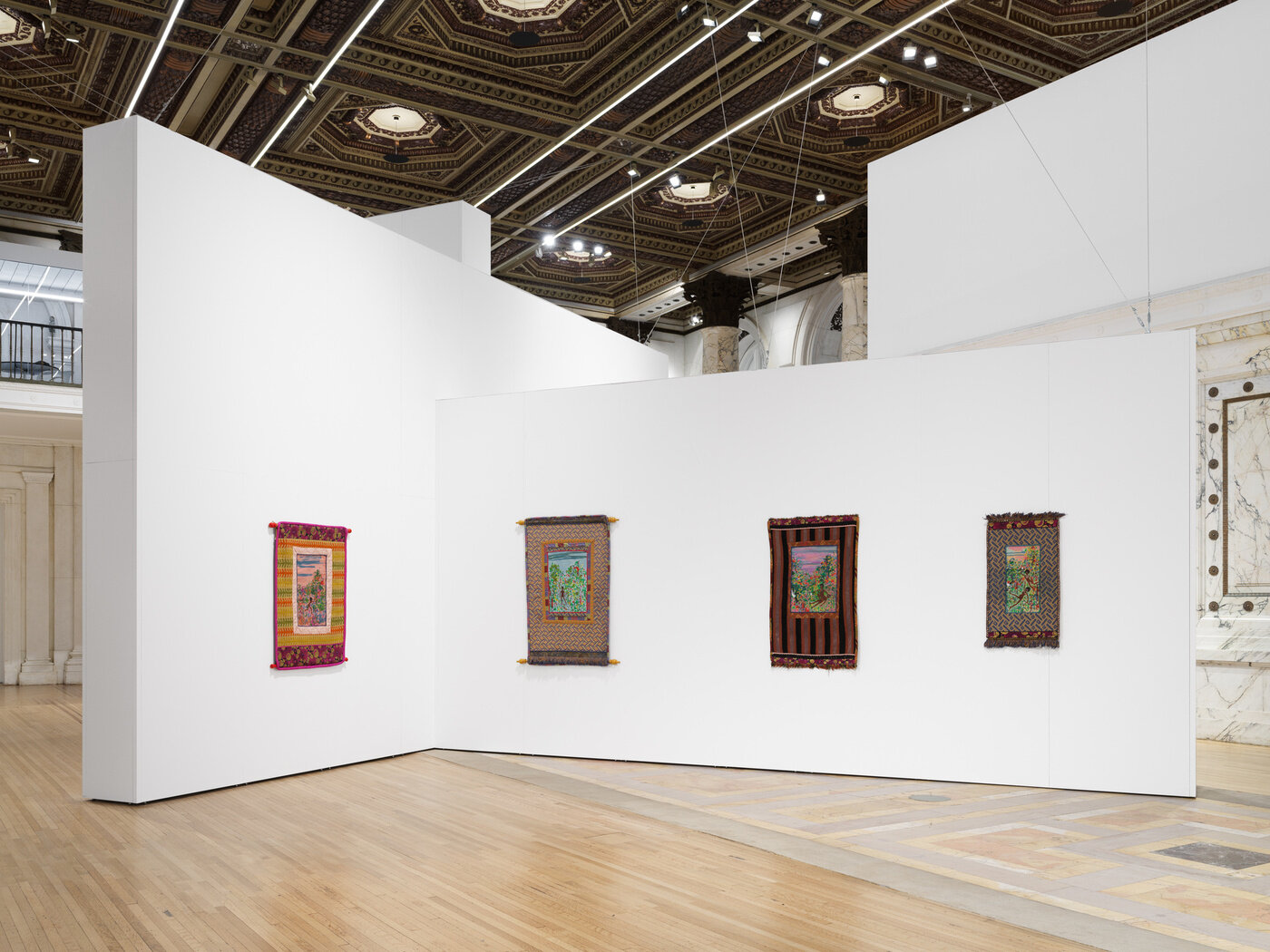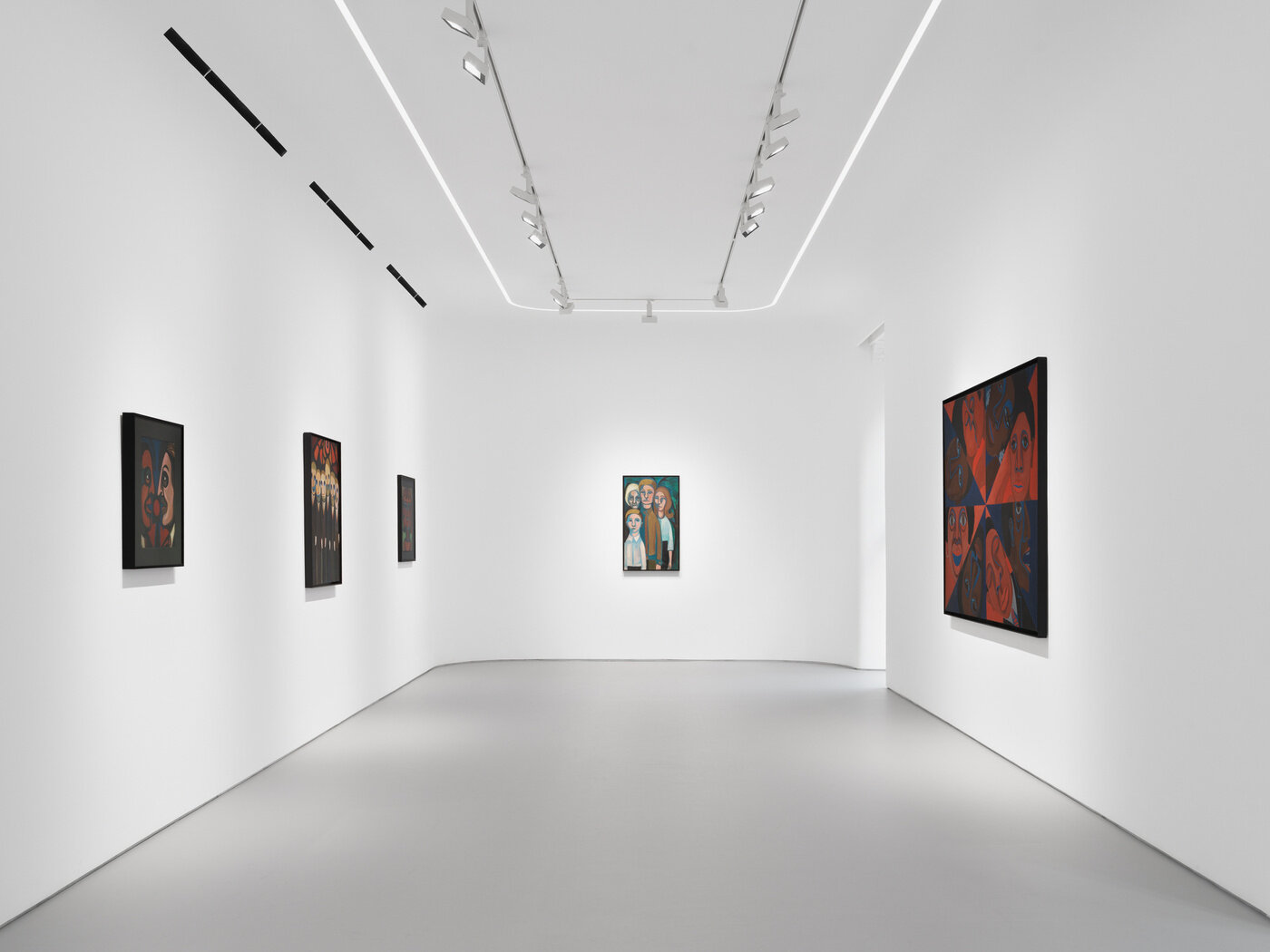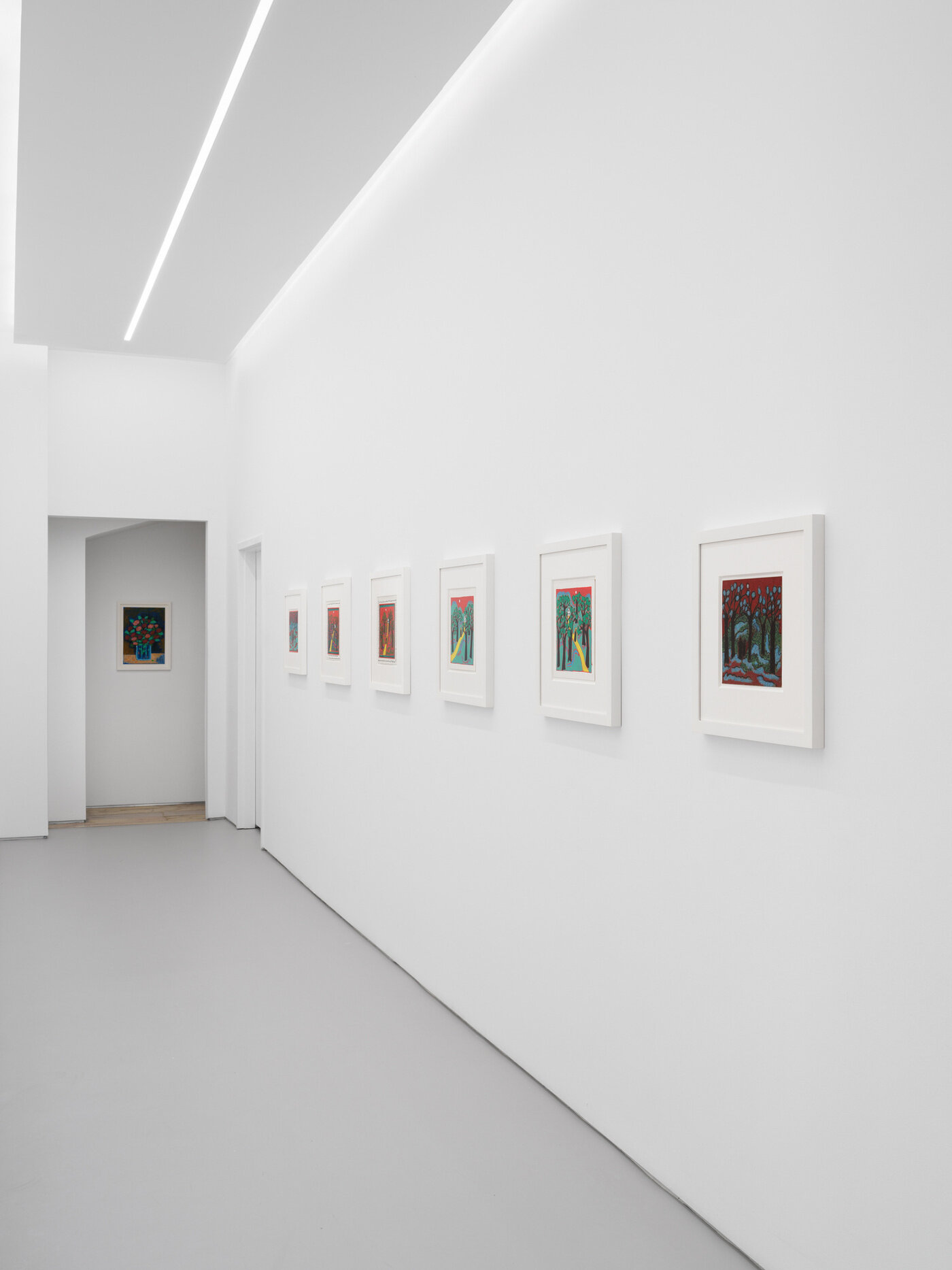Faith Ringgold
Works (Tap to zoom)
Press Release
Faith Ringgold
46 Lafayette Street, New York
November 14, 2025 – January 24, 2026
Opening reception Friday, November 14 from 6–8PM
PRESS
amNY
Colossal
Observer
PRESS RELEASE
Jack Shainman Gallery is pleased to announce Faith Ringgold, its inaugural exhibition dedicated to the trailblazing American artist, author, educator and activist. Spanning Ringgold’s extraordinary career, the exhibition foregrounds her groundbreaking and multifaceted practice in textiles—from her earliest ‘tankas’ to her iconic story quilt paintings—alongside pivotal early paintings, sculptures and rarely seen works on paper.
Restlessly creative and formally ambitious, Ringgold explored the expressive potential of diverse media to create an incisive narrative about the historical sacrifices and achievements of Black Americans. Her practice emerged from the political consciousness and activism she developed during the 1960s and 1970s in Harlem, New York. Ringgold’s early paintings and works on paper from this period combine her unique and graphic approach to figuration with a bold and innovative approach to constructing space, which she would continue to explore throughout her life. Through her desire to overcome the largely white, art historical tradition, Ringgold sought out forms more suitable to the exploration of gender and racial identity that she so urgently pursued, leading her to travel abroad in the 1970s, first to Europe and then to Africa.
Ringgold’s experimentation with textiles began with what she referred to as ‘tankas.’ Inspired by the religious and spiritually significant Tibetan thangkas she first encountered when visiting the Rijksmuseum in Amsterdam, Ringgold’s version manifested as paintings on unstretched canvas adorned with sewn fabric borders. It was the potential of these objects to explore the intersection of the craft and fashion traditions she inherited from her family with the history and techniques of European painting that inspired Ringgold and formally initiated her investigation into the medium that would become an integral part of her practice. They additionally provided the flexibility to make art that could be easily transported around the world for exhibition, allowing her to circumvent some of the many practical and economic barriers regularly faced by women artists of her time.
Ringgold’s first tankas, the Feminist Series (1972), feature lush and vividly colored forest scenes paired with hand-painted quotations by Black female abolitionists and Civil Rights leaders. The format inspired her to create Political Landscapes and Love Poems, two series of works on paper from the same year that were odes to her experiences utilizing her own words. These were followed by the Slave Rape Series (1973), in which Ringgold used the likenesses of herself and her daughters to embody the experiences of enslaved women—an act of both identification and reclamation.
Pushing the tankas into an increasingly abstract direction, Ringgold developed the Window of the Wedding (1974) series, a collaboration with her mother Willi Posey. Inspired by Kuba textiles, these abstract compositions were conceived as hanging prayer rugs intended to bring happiness and protection to married couples. Perhaps Ringgold’s most formally daring tanka works—a series of paintings with raffia fringe titled California Dah—were made in response to her mother’s passing, attempting to bridge the gap between the earthly and the afterlife.
Her experiments with textiles soon extended beyond the two-dimensional plane into painted soft sculptures and performance masks, works that merged her visual and performative sensibilities. Drawing from African sculptural traditions and her own background in theater and education, these works transformed fabric into a medium for storytelling and political expression. The Atlanta Children (1981) soft sculptures, created in response to the murders of twenty-eight Black children in Atlanta, exemplify this shift. Combining sewn and painted fabric, these haunting figures memorialize the victims while confronting the violence of systemic racism—effectively turning textile into a medium of mourning, resistance and care.
Ringgold’s later development of the story quilt in the 1980s both allowed her to work at successively larger scales and to connect with a global lineage of feminine creativity. Regularly combining her autobiography with scenes and episodes from the collective history of Black life in America, the story quilts are disarmingly intimate yet historically grand. The malleability of the form gave her the freedom to move between abstract and experimental series—such as the Politically Correct Sheets and Love Letters that she made in 1987—and more narratively grounded and figuratively descriptive ones, such as the Jazz Stories quilts made between 2004-2007.
In Politically Correct Sheets and Love Letters, Ringgold melded the printmaking plates she created at Robert Blackburn’s legendary printshop with impressionistic segments of quilting surrounding it, sharply contrasting the graphic nature of the former with the painterly expressivity of the latter. The later Jazz Stories quilts, by contrast, saw Ringgold draw upon her lifelong love of the genre while also centering female performers. By inverting the gendered hierarchies that historically privileged men, Ringgold proposed a vision of justice that would resonate beyond the arts.
Ringgold returned to the history of slavery later in her career with the Coming to Jones Road (1999-2010) series, which recounted the imagined journey of enslaved people traveling north along the Underground Railroad. The title references Ringgold’s own move to a predominantly white suburb in New Jersey and the racial prejudice she experienced while living there at the turn of the 21st century. This fusing of personal and historically derived narratives challenged the conception of the Underground Railroad as being a linear story towards freedom and underscored the ongoing obstacles that persist at the end of a journey and alongside a new beginning.
“The significance of Faith Ringgold’s life continues to be felt and understood in new, urgent and relevant ways, from pedagogy to artistry, from the personal to the political," said Jack Shainman. “Just as she fought tirelessly against the prevailing sentiments of racial and gendered exclusion of both her time and our own, so too did her inimitable work in textiles provide an example of how life and art—so often presumed to be separate—are in fact deeply and fundamentally intertwined. This exhibition marks the beginning of our commitment to furthering the legacy of one of this country’s most important and vital artists.”
Faith Ringgold (1930-2024) is recognized as one of the most significant cultural figures of the twentieth and twenty-first centuries, whose impact and influence can be seen throughout the worlds of art and activism today. Over more than six decades, Ringgold distinguished herself as an artist, author, educator and organizer, as she understood the necessity of addressing the politics of race and gender in America in more ways than one. Restlessly creative and formally ambitious, Ringgold worked in a variety of media—from quilts and paintings to performances and children’s books—to create an incisive narrative about the historical sacrifices and achievements of Black Americans.
In 2022, Ringgold was the subject of a major retrospective, Faith Ringgold: American People, which opened at the New Museum, New York, before then traveling to the de Young Museum, San Francisco and the Museum of Contemporary Art, Chicago. In 2019, Serpentine Galleries, London opened Faith Ringgold, which then travelled to both the Bildmuseet Umeå, Sweden and Glenstone Museum, Potomac. From 2010 to 2013, American People, Black Light: Faith Ringgold’s Paintings of the 1960s opened at the Neuberger Museum of Art, New York and traveled to the Perez Art Museum, Miami, Spelman College Museum of Fine Art, Atlanta, and the National Museum of Women in the Arts, Washington, D.C.
Ringgold is included in numerous public collections, including the Brooklyn Museum, New York; Crystal Bridges Museum of American Art, Bentonville, AR; High Museum of Art, Atlanta; The Metropolitan Museum of Art, New York; Museum of Modern Art, New York; National Gallery, Washington, DC; National Museum of Women in the Arts, Washington, DC; National Museum of African American History and Culture, Washington, DC; Neuberger Museum of Art, New York; Philadelphia Museum of Art; Public Art for Public Schools, New York; Schomburg Center for Research in Black Culture, New York; Smithsonian American Art Museum, Washington, DC; Solomon R. Guggenheim Museum, New York; St. Louis Art Museum, Missouri; Studio Museum, Harlem, New York and The High Museum, Atlanta.
